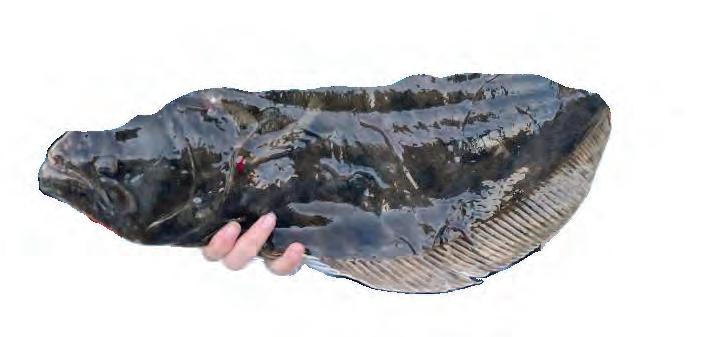
2 minute read
CATCH FLOUNDER On the Move!
By Emily Rose Hanzlik
With the cold fading away, so will the flounder, but they return with spring. Many anglers believe the second cold snap is prime time, when southern flounder begin moving through the inlets. The timing varies greatly, but it can be gangbusters in the inlets if you catch it right. Even if you don’t, there will likely be some stragglers moving through.
Flounder are interesting fish. As hatchlings, they swim upright with eyes on both sides of their heads, just like most fish. As they mature, one eye moves over to the other side of their head and they spend the rest of their lives looking up with one side of their body flat on the bottom.
There are several species of flounder with overlapping ranges. Summer flounder are what northern anglers call flukes, their range in the Atlantic stretches from Nova Scotia down to Florida. Southern flounder inhabit be found in the Gulf of Mexico from Florida to Texas. Southern flounder can be identified by their white underbelly and an absence of the ocellated spots the other two species have. These spots resemble eyes, which are thought to trick predators. For southern flounder, males don’t grow much longer than 12 inches, while females can reach about 25 inches.
Southern flounder range from North Carolina to Texas, however, they do not migrate besides going offshore for mating and then returning inshore. While inshore, they prefer shallow muddy and grassy flats, where they hide on the bottom and ambush prey.
When the mating season rolls around in late fall and early winter, flounder migrate out of the passes. At the end of winter into early spring, all of the females and some males head back inshore.
Flounder can be caught with artificial and live bait. Artificial lures such as jigs, small swimbaits and spoons worked near the bottom can all produce fish. Small live bait works the best, with finger mullet being my personal favorite. Small pilchards, mojarra and mud minnows will also do the trick.
Light tackle is all that is needed to catch them. A small weight, 1-ounce, or so, with a short 12- to 16-inch fish-finder rig works best. A live shrimp on a jig head, such as a Troll Rite, jigged along the bottom can also work great and is a good way to cover more area with a live bait.
Some of the best places to find flounder are on inlet rock piles and bridge or pier pilings. Cast upstream and work lures downstream, or let your bait drift downstream.
The IGFA all-tackle record for Southern Flounder is 20 pounds, 9 ounces. It was caught out of Nassau Sound, Fla.
Emily Rose Hanzlik holds 56 IGFA world records in various categories. She hails from West Palm Beach, where she has a part time Bowfin Guide Service as well as fishing classes for Jr. Anglers. Find her on Social Media @ emilyhanzlikoutdoors.
Searching for a New Adventure?
The moment you set foot in London, Kentucky it’s obvious you’ve entered someplace different. In the breathtaking outdoors of Laurel River Lake you get the sense you’re on the verge of something new and at the threshold of an unforgettable adventure. VisitLondonKY.com









